Compliance Management Software
Struggling to keep up with compliance — and do it efficiently? Meet Ncomply, the all-in-one compliance management system for financial services companies. Streamline compliance research, implementation, and oversight in a single, centralized platform — eliminating silos, reducing manual effort, and ensuring your institution is on top of regulatory requirements.
Relied on by thousands of financial institutions nationwide



Essential Compliance Management Software
Ncomply takes the pain out of implementing compliance management. With powerful features designed to reduce complexity, improve efficiency, and eliminate manual tracking, it streamlines your processes, making compliance easier for your team.
Tailored Regulatory Alerts
Receive instant notifications on regulatory changes — including links to Federal Register summaries, deadlines, and suggested action plans for implementation — based on your organization’s size, products, services, examiner, and geography.
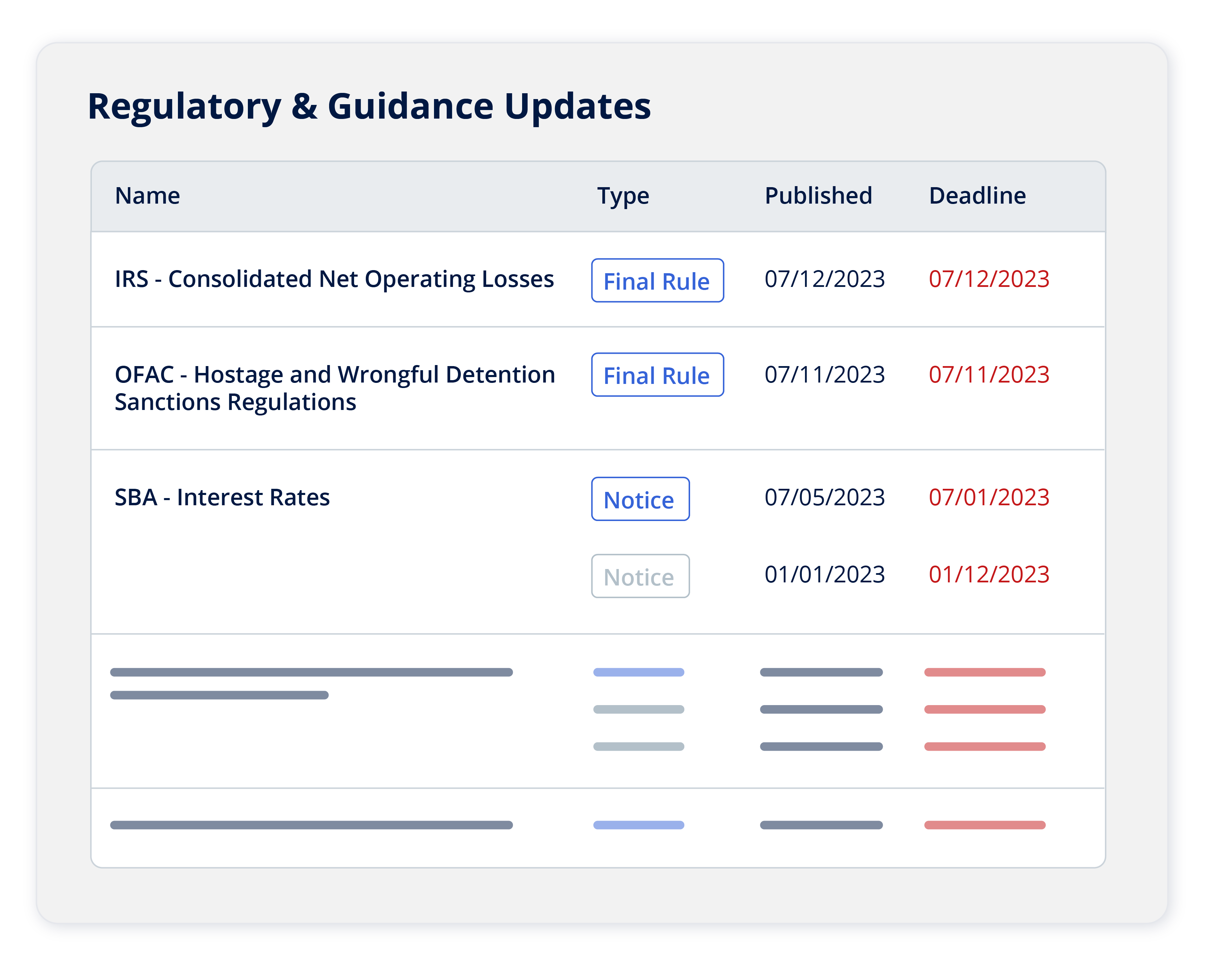
User-Friendly Regulatory Library
Access a real-time database of nearly 5,000 guidance documents, 6,000+ U.S. and state rules and laws, and 11,000+ industry news updates. Search and filtering tools make it easy to find relevant compliance information quickly.
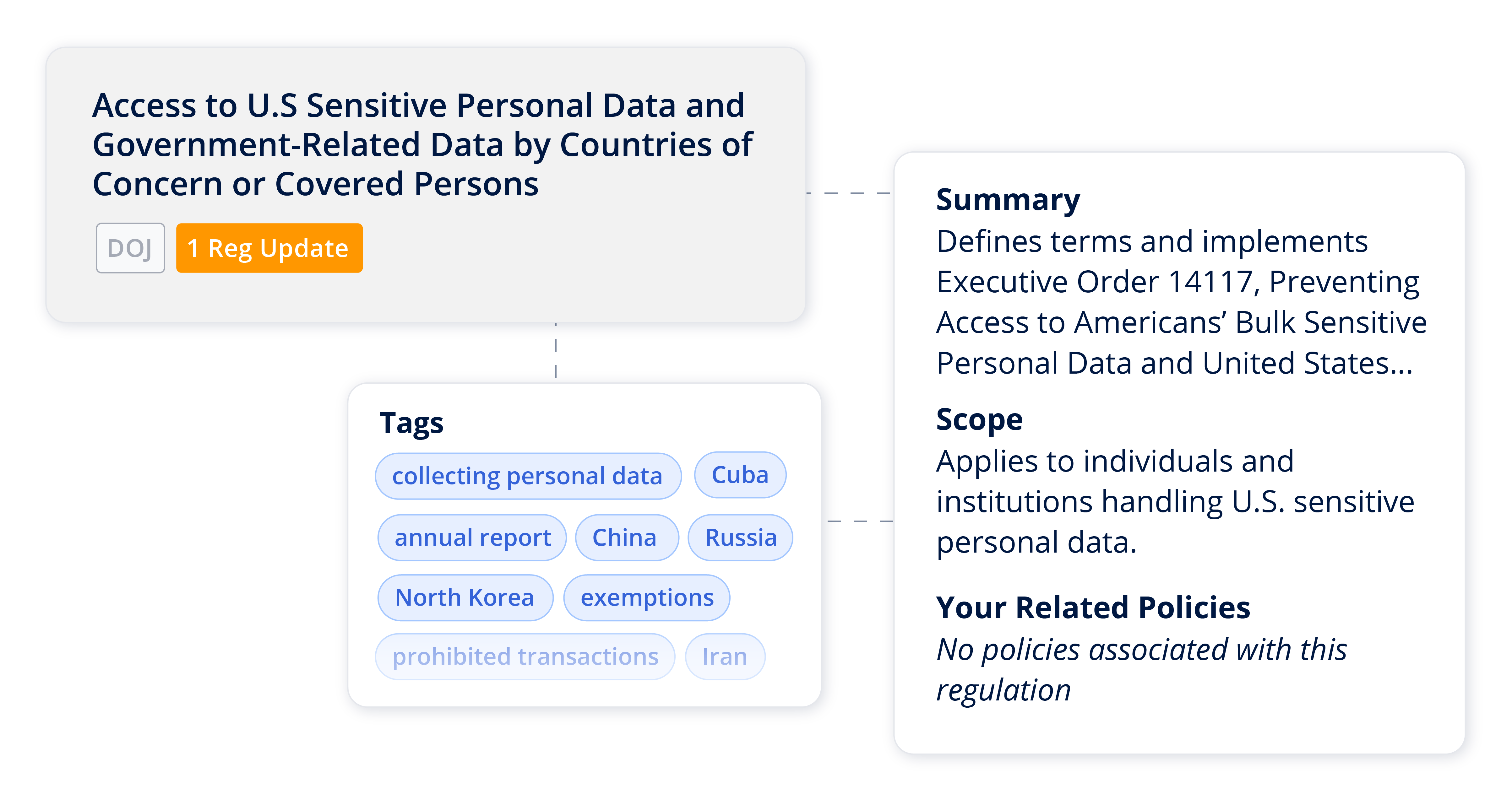
Robust Exam-Ready Reporting
Track cost breakdowns, regulatory changes, policy updates, and complaint management in one place. Generate detailed reports for stakeholders, management, and examiners to demonstrate compliance with ease.
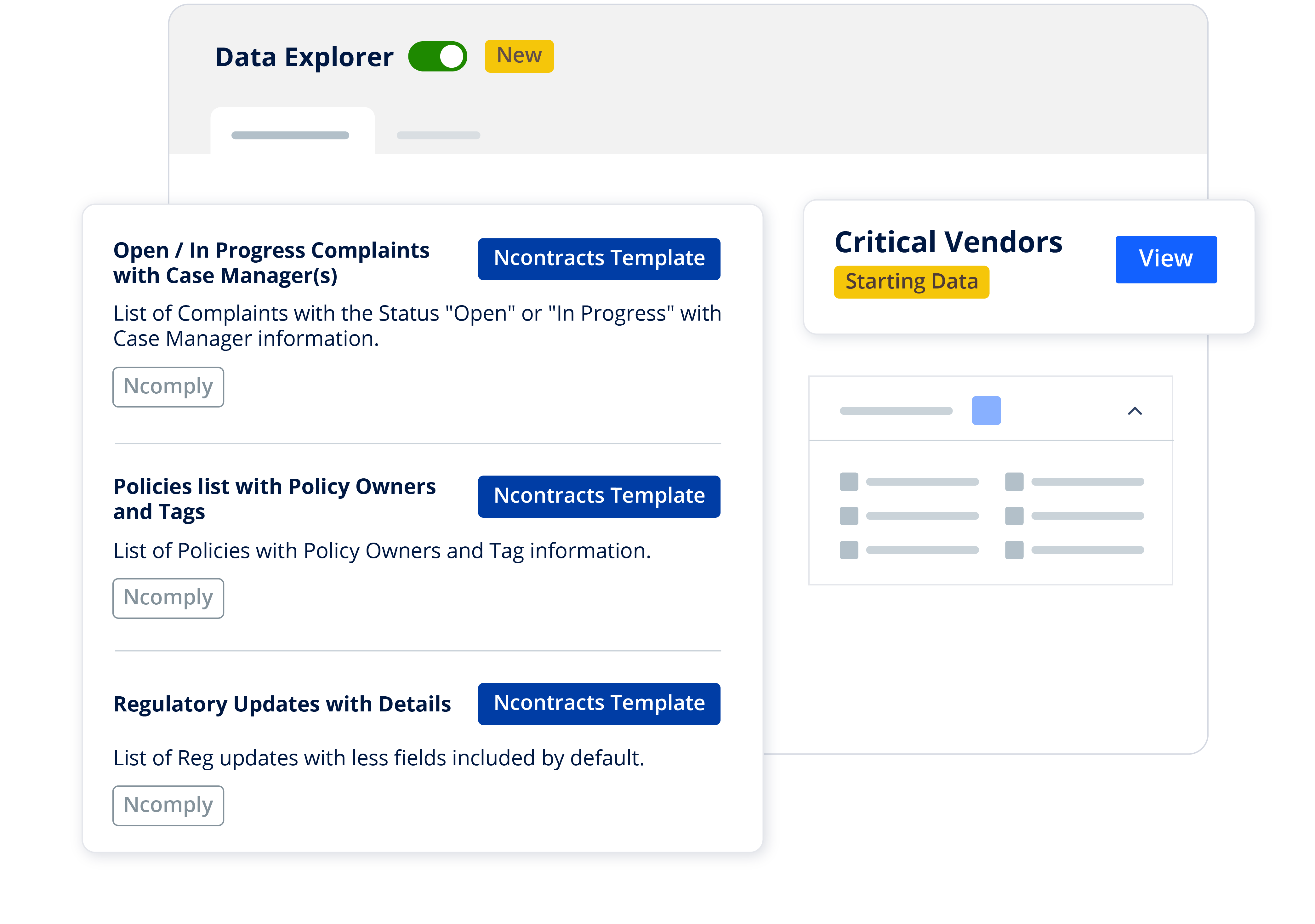
Simple Requirements Builder
Assess regulatory requirements for new products, services, or business expansions in minutes. Ncomply’s requirements builder tool enables compliance teams to provide insights that support smarter decision-making.
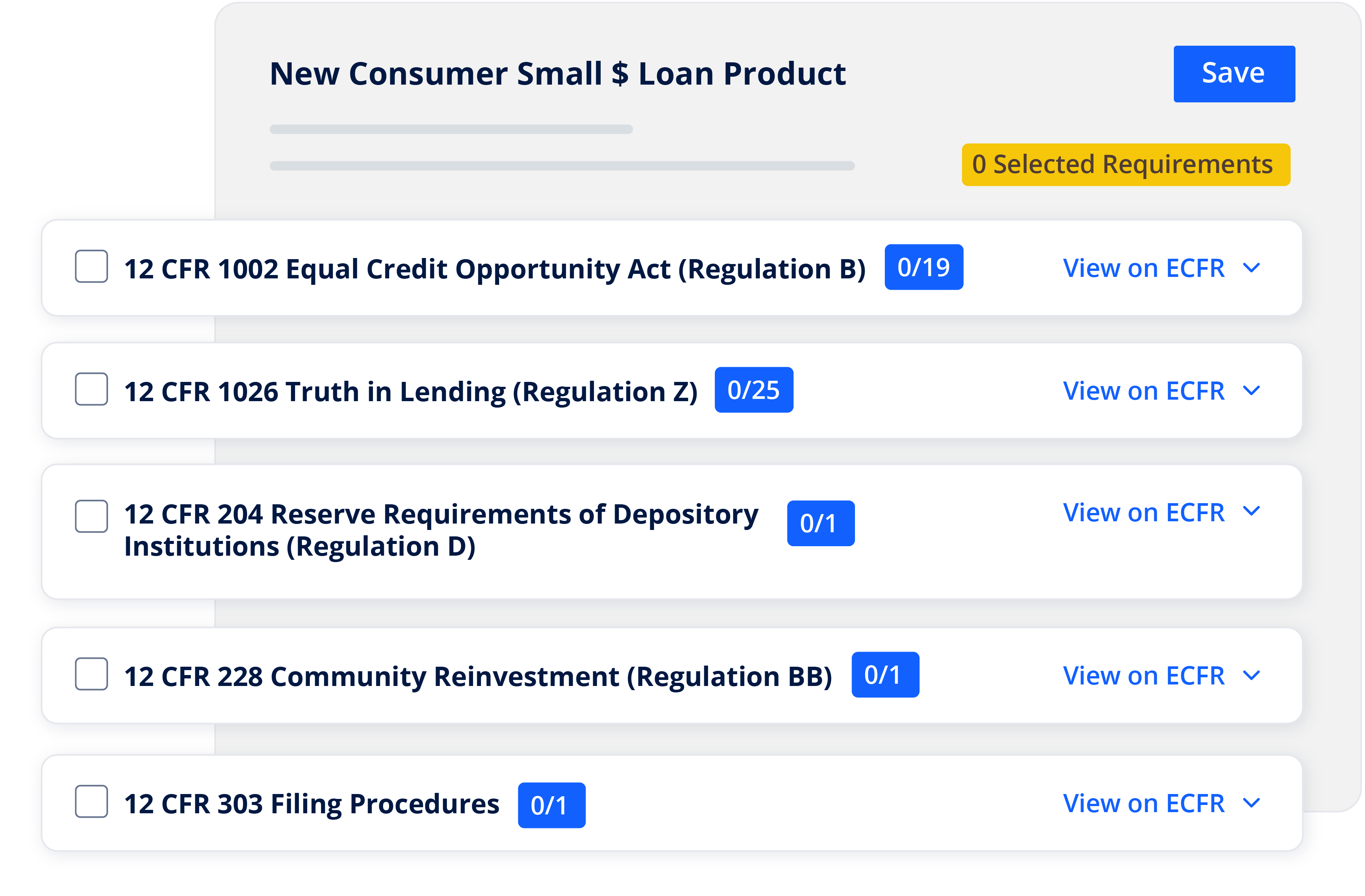
Dynamic Policy Management
Manage policies with version control, automated reminders, and board approval tracking. A centralized library ensures policies remain up to date and easily accessible for audits and internal reviews.
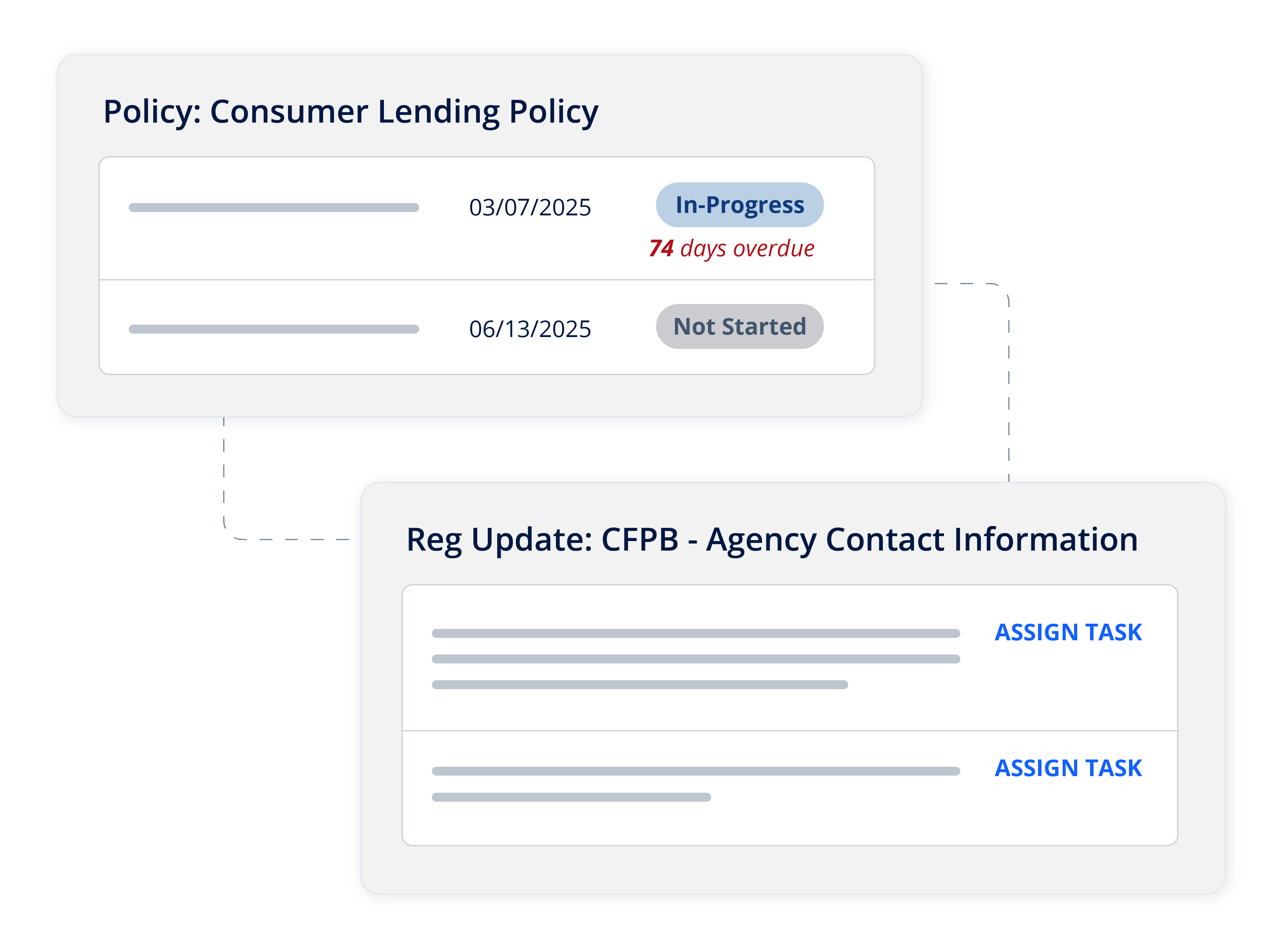
Customizable Policy Templates
Get a head start on policy writing with a library of policy templates drafted and regularly updated by financial institution compliance experts to align with evolving regulatory requirements and best practices. Customizable to fit your institution’s specific needs.
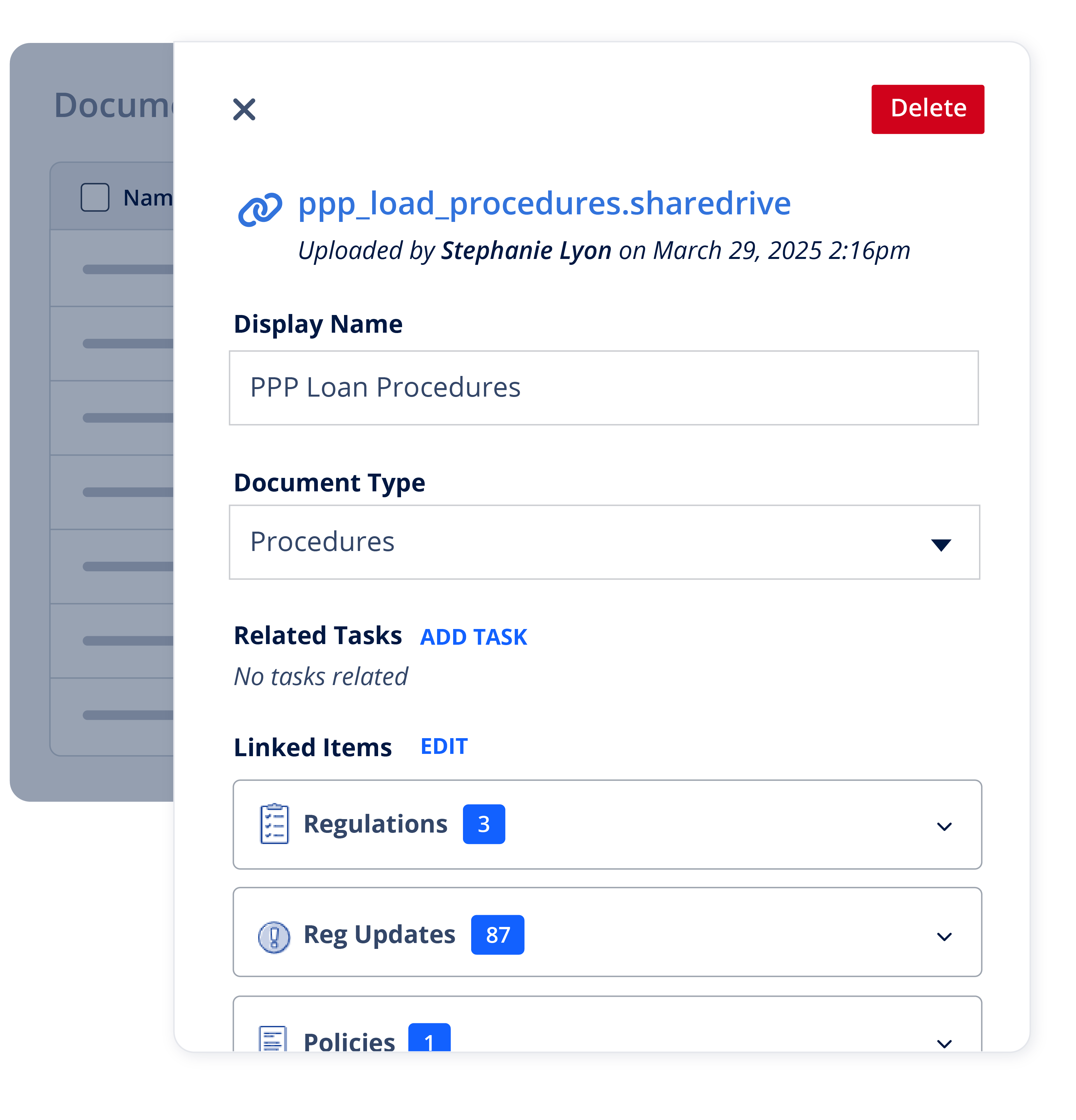
Interdepartmental Collaboration Tools
Our compliance management solution breaks down departmental silos. With automated task reminders, progress tracking, and assignments, Ncomply creates accountability and promotes a compliance culture across the institution.
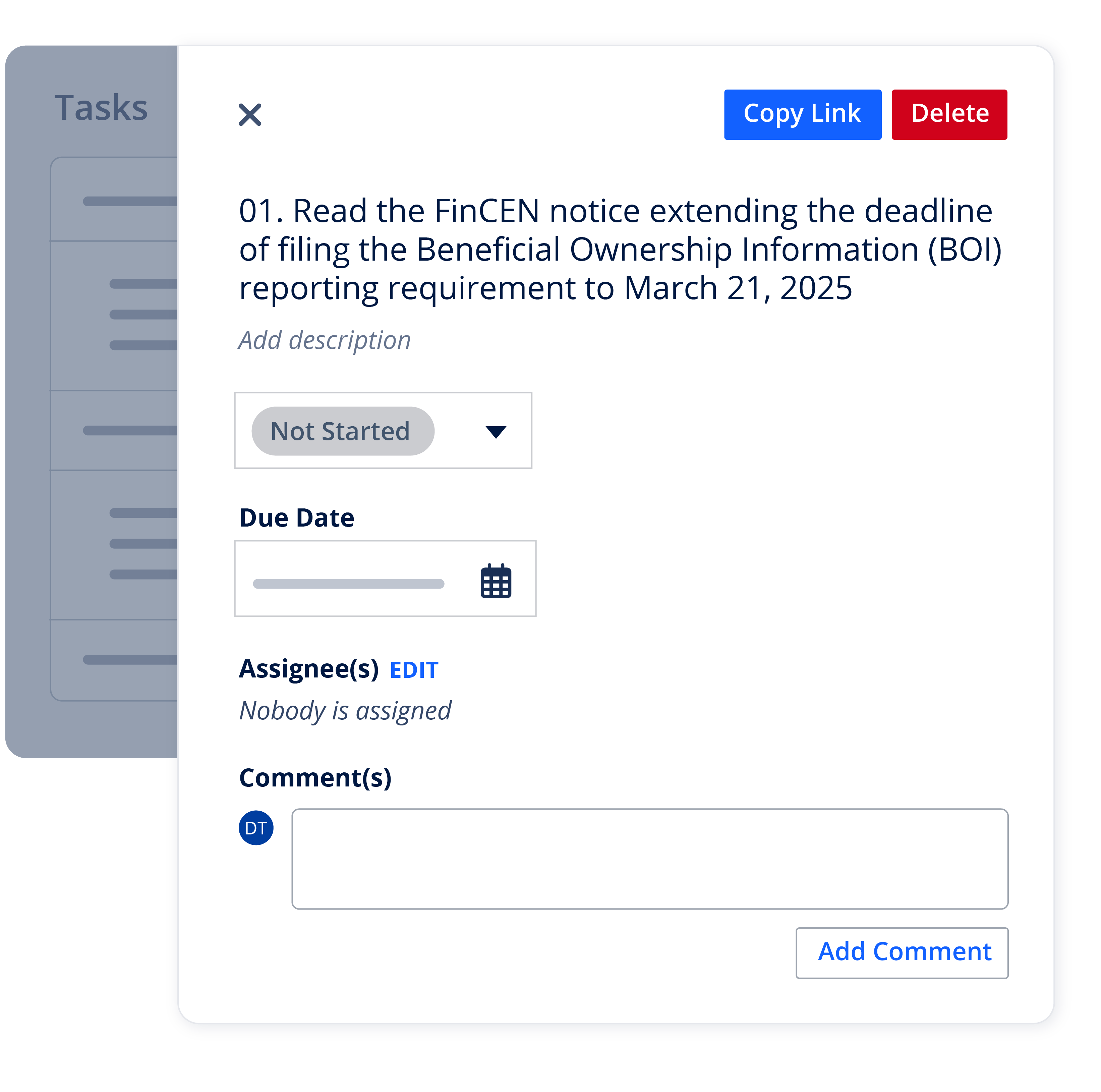
Ntelligent Complaint Management
Log, investigate, and resolve complaints efficiently with Ncontracts' complaint management software — now powered by Complaint Ntelligence. Automatically classify complaint types with clear confidence levels, extract key details for faster investigation, and enable efficient root cause analysis. Transform reactive complaint handling into proactive risk management with 90%+ accuracy in complaint cataloging and classification.
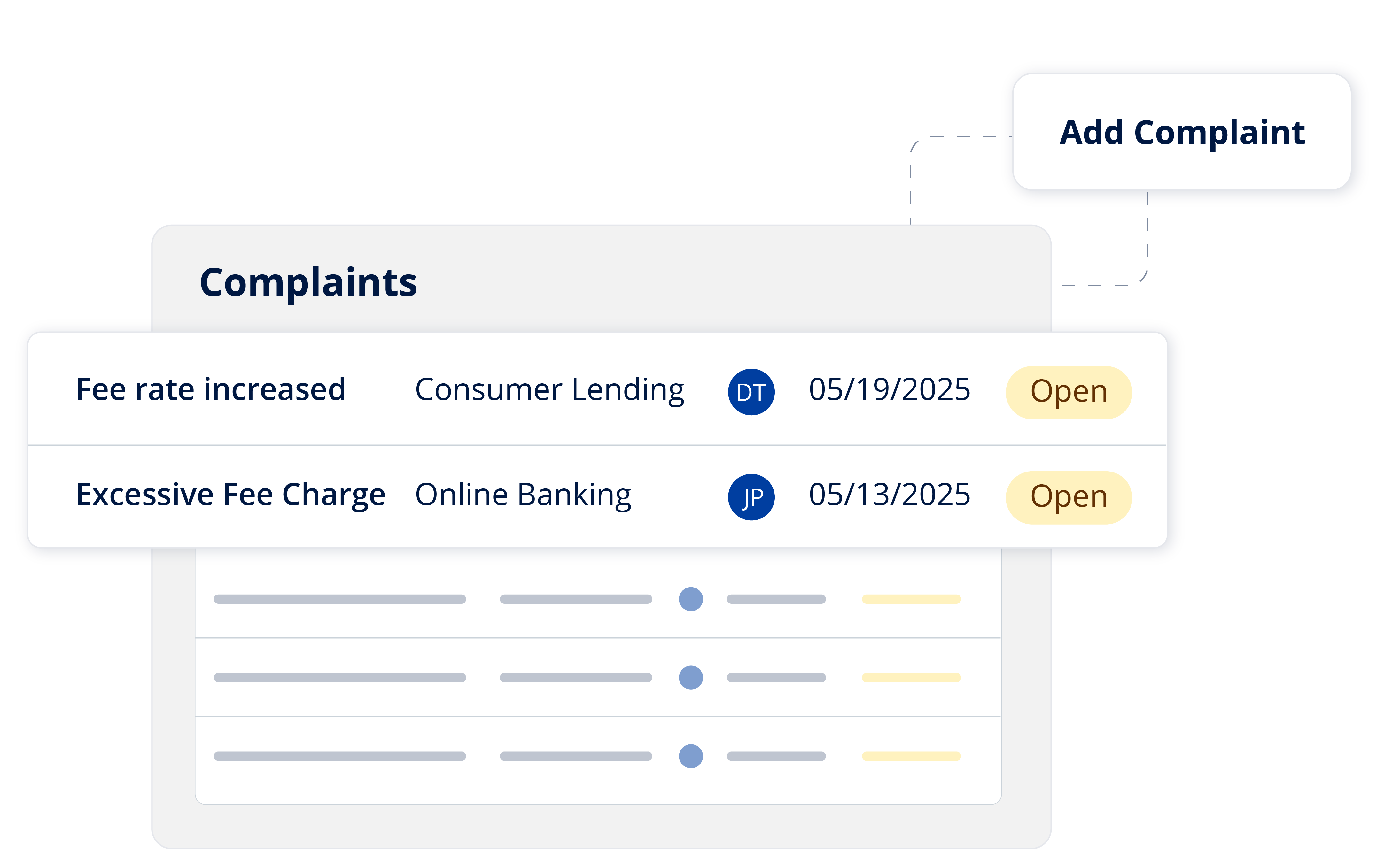
Unlimited Document Management
Store, organize, and retrieve compliance documents in a centralized repository. Advanced search and filtering features keep everything accessible and exam-ready.
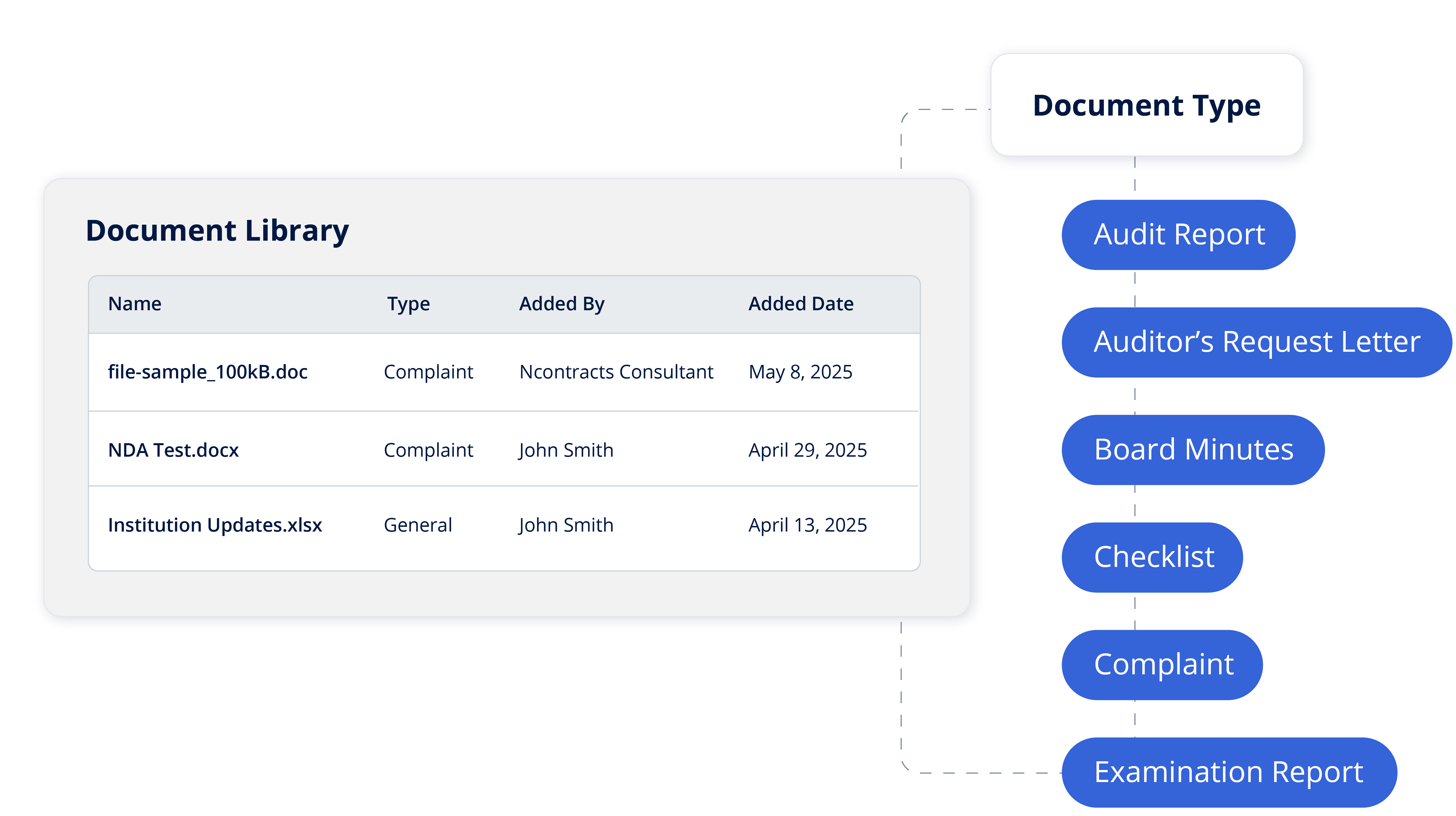
Expert implementation services and support
Task management
Knowledge base with 100+ compliance training videos
Continuous updates
Due date and deadline monitoring
Ready to Transform Your Compliance?
Streamline processes, reduce manual effort, and stay ahead of regulations, all within a single, easy-to-use platform designed for efficiency and peace of mind.
Compliance Management, Simplified
Managing compliance is complex, but it doesn’t have to be. Ncomply is the compliance management solution that streamlines oversight, automates tasks, and keeps your team informed, so you can stay organized and navigate compliance requirements with confidence.
Eased Workload, Increased Confidence
Reduce compliance headaches with research tools, industry expert guidance, automation, centralized data, and detailed tracking. Spend less time on manual tasks and more on strategy, knowing your compliance program is organized and up to date.
Streamlined Compliance Oversight
No more scattered, manual tracking — Ncomply centralizes compliance processes, improving efficiency, ensuring consistency, and giving compliance teams a clear, current view of activities across departments.
Faster, More Informed Decision-Making
Real-time regulatory updates and automated alerts keep your team informed, allowing compliance to quickly assess compliance issues and risks, track and implement changes, and provide clear guidance for confident, proactive decision-making.
Enhanced Exam Readiness
Robust reporting, centralized documentation, and clear audit trails give compliance teams the visibility to stay prepared, streamline exam prep, and easily demonstrate compliance to examiners and internal audit with well-documented records.
Faster Compliance Onboarding
Quickly onboard new staff and bridge knowledge gaps left by departing employees, ensuring smooth transitions and uninterrupted operations with minimal downtime.
Expert Support, Continuous Improvement
Built by compliance experts, Ncomply offers industry-leading support, seamless implementation, and ongoing enhancements, ensuring your team has the knowledge and tools to stay ahead of regulatory changes and legal requirements.
Customer Success Story
"Without Ncomply, I’d still be dealing with meetings on a regular basis".
When Langley Federal Credit Union needed a compliance solution, it turned to Ncomply. With our cost-effective software, Langley lowered its compliance workload by 33%.
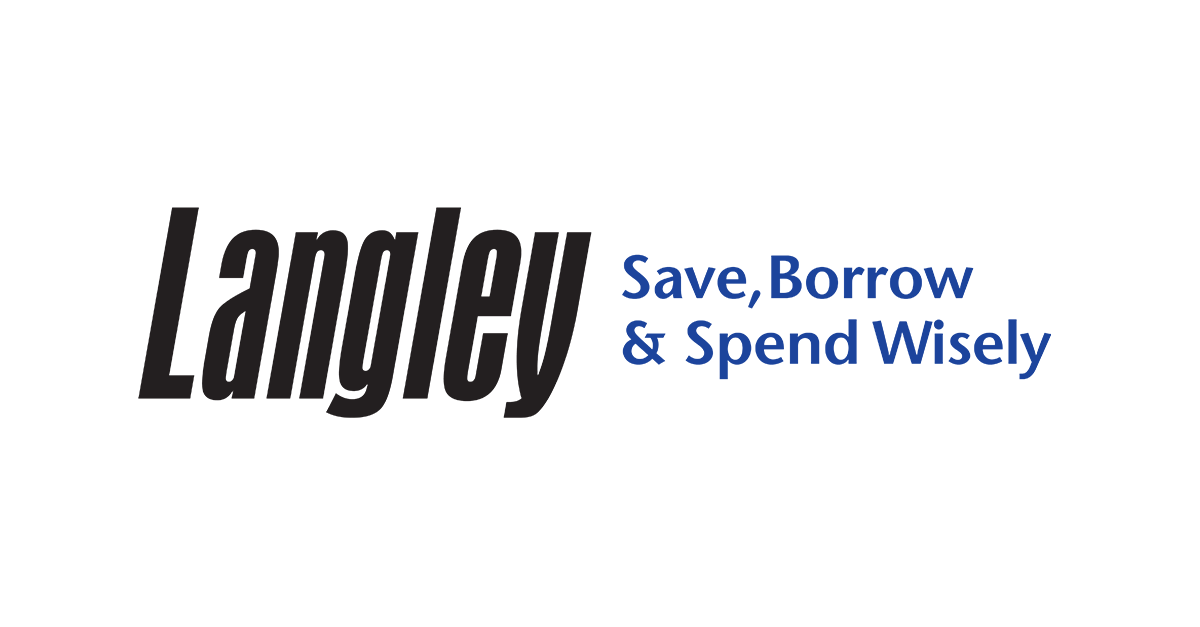
Compliance Management Buyer’s Guide
Discover the advantages of compliance management software for streamlining processes, boosting performance, and achieving complete exam readiness. Minimize the time your team spends tracking down regulatory documents.
.png?width=1150&height=924&name=Copy%20of%20Various%20Clients%20%20Social%20Images%20(1).png)
Frequently Asked Questions
Relied on by financial institutions nationwide, Ncomply drives reliable, efficient compliance for confident results.
Compliance management solutions like Ncomply centralize key compliance functions, providing a single source of truth and a hub for compliance processes and communication. They promote effective compliance with tools for:
- researching, tracking, and interpreting regulations;
- streamlining policy, complaint, document and task management; and
- fostering a culture of compliance and enhancing communication and across the organization.
Enforcement Action Tracker
Our Enforcement Action Tracker keeps you in the know with timely, plain-language summaries of recent enforcement actions from the CFPB, FDIC, OCC, Federal Reserve, and other key regulators.
Regulatory Compliance Updates
Join our team of regulatory compliance experts to know more about latest regulatory changes, news, and enforcement actions – and what they mean for your institution.
Compliance Management Buyer’s Guide
Learn how compliance management software can help you streamline your compliance processes, improve performance, and keep your organization exam-ready.
Compliance Risk Management Explained
Managing compliance risk is essential to enterprise risk management (ERM), the framework a financial institution uses to holistically manage risk throughout the organization. Here's more.
Navigating Change
A Comprehensive Guide to Effective Change Management in Financial Institutions
Langley FCU Cut Compliance Workload by a Third with Ncomply
VP of ERM and Internal Audit Mark Hutchinson realised that Langley FCU could now address faulty processes, not just individual complaints, thanks to Ncontracts' Ncomply.
